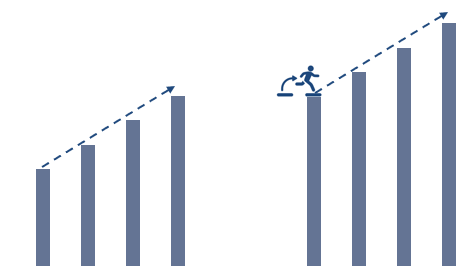The role of the Head of Risk Management in a hedge fund is crucial to the firm’s overall strategy, as it ensures that the firm operates within acceptable risk parameters and is well-positioned to avoid catastrophic losses. This senior role involves overseeing the identification, assessment, and mitigation of all forms of risk the fund might face, from market risks to operational and regulatory risks.
Here’s a breakdown of key responsibilities:
1. Risk Strategy and Framework Development
- Establish Risk Management Policies: Develop and implement comprehensive risk management strategies, policies, and procedures that align with the hedge fund’s investment goals and regulatory requirements.
- Set Risk Limits: Define risk limits, including exposure limits, concentration limits, and VaR (Value at Risk) thresholds. These are critical to ensure that the fund’s portfolio stays within predefined tolerances.
- Stress Testing and Scenario Analysis: Regularly run stress tests and scenario analyses to understand how extreme market events (e.g., financial crises, geopolitical events) could impact the portfolio.
2. Risk Identification and Assessment
- Market Risk: Identify and monitor risks arising from changes in market variables, such as interest rates, equity prices, commodity prices, currency exchange rates, and volatility.
- Credit Risk: Assess the likelihood of default by counterparties or issuers in the fund’s portfolio.
- Liquidity Risk: Evaluate the fund’s ability to meet its financial obligations, particularly in stressed market conditions where asset liquidity could dry up.
- Operational Risk: Assess risks related to failures in internal processes, systems, human error, or external events that could disrupt operations.
- Model Risk: Manage the risks associated with the use of quantitative models for trading and risk assessment, ensuring that models are regularly tested and updated.
3. Risk Monitoring and Reporting
- Real-Time Risk Monitoring: Oversee continuous tracking of risk exposures across all portfolios in real-time, ensuring any breaches of predefined risk limits are immediately flagged.
- Risk Reporting: Provide regular and ad-hoc reports on risk metrics and exposures to senior management, the risk committee, and external regulators. This includes portfolio risk profiles, value at risk (VaR), stress testing results, and liquidity assessments.
- Dashboard Creation: Develop and maintain risk dashboards for internal use, offering insights into risk levels, market conditions, and portfolio adjustments.
4. Collaboration with Other Departments
- Collaboration with Portfolio Managers: Work closely with portfolio managers and traders to understand the risk profile of various investments and trading strategies. Provide advice on risk mitigation and portfolio diversification.
- Legal and Compliance: Ensure that the fund’s risk management practices comply with regulatory requirements, including those related to capital adequacy, reporting, and disclosure.
- Investment Strategy Team: Assist the investment team in refining strategies by providing input on risk-reward trade-offs, correlations, and diversification.
5. Risk Mitigation and Hedging
- Hedging Strategies: Develop and implement strategies to hedge against various risks (e.g., using derivatives to hedge market risk, implementing credit default swaps to manage counterparty risk).
- Diversification: Advise on portfolio diversification to reduce concentration risks and optimize the fund’s risk-return profile.
- Counterparty Risk Management: Establish guidelines for selecting and monitoring counterparties, ensuring that credit and operational risks associated with them are understood and managed.
6. Regulatory Compliance and Governance
- Regulatory Reporting: Ensure the fund complies with relevant regulatory requirements related to risk management, such as those set out by bodies like the SEC, CFTC, and other regulatory entities in various jurisdictions.
- Risk Governance: Oversee the risk governance framework, including reporting to the board and risk committees. Provide expert advice on potential regulatory changes and their impact on the fund’s risk landscape.
7. Leadership and Oversight
- Team Leadership: Lead a team of risk analysts, data scientists, and risk officers, fostering a risk-aware culture across the organization. Provide training and mentorship to ensure that the team is equipped to identify and manage emerging risks.
- Crisis Management: In times of market turbulence or financial crisis, the Head of Risk Management plays a key role in decision-making, managing immediate risk exposure, and communicating risk assessments to senior management.
8. Technology and Tools
- Risk Management Systems: Oversee the selection, implementation, and use of risk management software, data analytics platforms, and quantitative tools that enable the firm to measure and monitor risk.
- Automation and AI: Explore the use of machine learning and artificial intelligence in identifying risks, detecting anomalies, and improving forecasting models.
Skills and Qualities Required:
- Strong Analytical Skills: The ability to analyze complex financial data and assess risk in real-time.
- Quantitative Expertise: A deep understanding of financial models, statistical methods, and risk metrics like VaR, stress testing, and scenario analysis.
- Communication Skills: Ability to clearly communicate risk insights to non-expert stakeholders, including senior management and external regulators.
- Leadership: Experience in leading risk teams and collaborating with multiple departments to ensure firm-wide risk management alignment.
